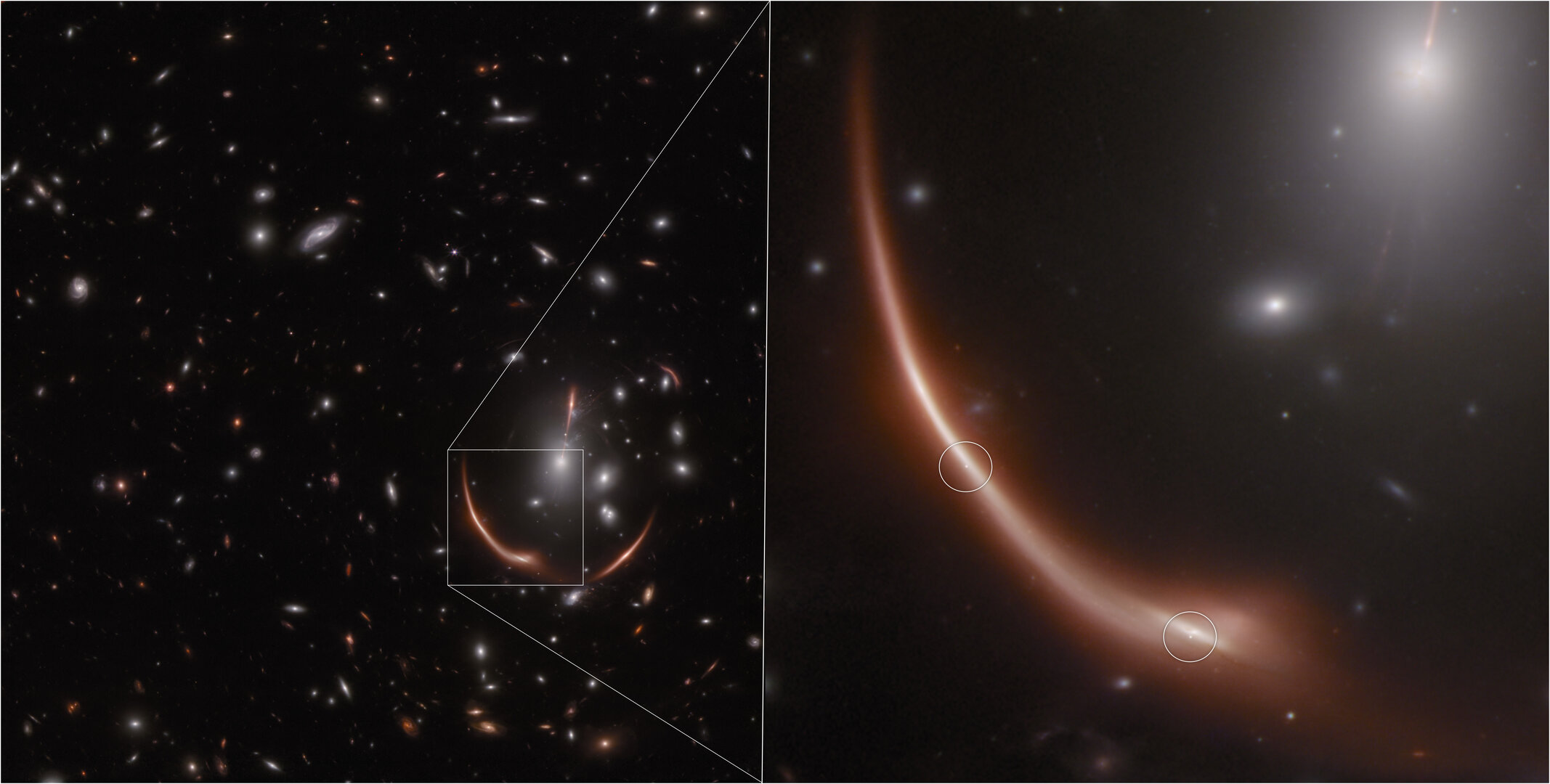

Webb spots a second lensed supernova in a distant galaxy (annotated)
In November 2023, the NASA/ESA/CSA James Webb Space Telescope observed a massive cluster of galaxies named MACS J0138.0-2155. Through an effect called gravitational lensing, first predicted by Albert Einstein, a distant galaxy named MRG-M0138 appears warped by the powerful gravity of the intervening galaxy cluster. In addition to warping and magnifying the distant galaxy, the gravitational lensing effect caused by MACS J0138 produces five different images of MRG-M0138.
In 2019, astronomers announced the surprising find that a stellar explosion, or supernova, had occurred within MRG-M0138, as seen in images from the NASA/ESA Hubble Space Telescope taken in 2016. When another group of astronomers examined the 2023 Webb images, they were astonished to find that seven years later, the same galaxy is home to a second supernova.
Two images of the supernova (circled) are seen in the Webb NIRCam (Near-Infrared Camera), but an additional supernova image is expected to become visible around 2035.
In this image blue represents light at 1.15 and 1.5 microns (F115W+F150), green is 2.0 and 2.77 microns (F200W+277W), and red is 3.56 and 4.44 microns (F356W + F444W).
These observations were taken as part of Webb Director’s Discretionary Time program 6549.
Note: This post highlights data from Webb science in progress, which has not yet been through the peer-review process.





